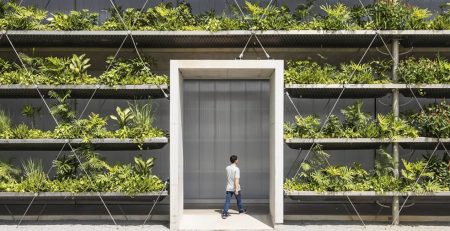What was The Buzz in July?
Our monthly roundup of real estate industry news.
Here are a few of the stories that caught our attention in July. The office, hotels, and industrial sectors are seeing post-pandemic highs, as deals and occupancy rates continue to improve. And could The Crown Estate help Labour boost wind farms with their seabed deal?
Office demand drives Grosvenor’s London occupancy to post pandemic high
Over the first half of the year, Grosvenor signed 64 leases across all sectors in its Mayfair and Belgravia portfolio covering 127,000 sq. ft. and generating £8.52m of rent, 11% ahead of ERVs.
Significant office leasing, driven by the success of Grosvenor’s new flex office offer, reduced lettable voids across the portfolio to just 0.9%, down from 3.8% at end of 2023 – below the West End average at June 2024 of 7.4% (source: Savills).
Led by the announcement of Cornus’ signing at the Ice Factory, retail and leisure leasing has also been strong over this period, accounting for almost 60% of deals signed. A further 12 new retail and leisure leases and renewals are under offer at 14% over ERVs.
Taken together, occupancy across the portfolio, excluding strategic voids, has reached a post pandemic high of over 97%.
Leasing strength across Mayfair and Belgravia comes as a result of Grosvenor’s active place and asset management. Alongside plans to invest c£1.4 billion in London in the next 10 years, recent innovations to support occupiers include our digital simplified lease that can take just 72 hours to complete. The business also provides funding to support occupier expansion, and has committed £90 million to retrofit properties, making them more sustainable and cost effective to run.
Amelia Bright, Executive Director, London Estate, Grosvenor commented: “The results across our London portfolio demonstrate the benefit of continual investment in our properties, places and partnerships with occupiers. We’re seeing ongoing strength in demand for our high-quality, sustainable places. With a substantial investment pipeline including South Molton, the largest mixed-use development on site in the West End and further flex openings, we’re confident about future performance.”
Ex-JLL flex space MD appointed CEO of David Phillips
Leading provider in the Build to Rent sector – David Phillips – reports significant growth in 2023, with the company achieving a 20% increase in year-on-year sales revenue and a secure 8.5% net profit.
After 19 years of dedicated service, Nick Gill will be departing David Phillips. His departure comes at a time of substantial momentum, highlighted by the company’s robust 2023 performance. To date, David Phillips has interior designed, furnished and fitted out 25,000 Build to Rent units globally. Over the coming weeks, Nick is supporting the handover of responsibilities to ensure a seamless transition of relationships and key projects.
David Phillips is excited to announce that Ben Munn will be joining the company as its new CEO. Ben brings extensive experience from JLL, where he served as the Global Managing Director for JLL Flex – a business line he founded in 2019. With a well-established career in commercial real estate and technology, including senior leadership roles at CBRE, IWG and The Instant Group, Ben’s expertise will be instrumental in accelerating the company’s momentum, driving growth and transforming the way the business supports its clients in the Living Sector.
Hotels sector take largest ever share of UK real estate investment
Savills research shows that activity has been buoyed by portfolio transactions which accounted for close to 70% of volumes so far this year. Some of the standout deals to date include Ares Management Corp. acquiring 21 hotels for a reported £400 million and Blackstone’s acquisition of the Village Hotel platform from KSL Capital Partners for a reported £780m.
Tim Stoyle, Head of UK Hotels at Savills, says: “The increase in volumes marks a turning point for hotel activity and investor confidence; the fact that large portfolio acquisitions are getting over the line highlights returning appetite to increase exposure to the sector post the uncertainty generated by rising debt costs in late 2022 and into 2023.”
Crown Estate teams up with Labour’s GB Energy to accelerate clean tech projects
British seabed owned by the Crown Estate will be used to help build windfarms in plans aimed at making the UK more self reliant for energy.
It is the first big announcement by Great British Energy, Labour’s new publicly owned energy company. The firm’s aim is increase renewable energy projects, boosted by £8.3bn in state funding, paid for by a windfall tax on oil and gas giants.
The deal means the Crown Estate – which manages a huge portfolio of property and land and helps fund the Royal Family – will lease the land on which wind farms can be developed and built. The Crown Estate owns the majority of the seabed which stretches up to 12 nautical miles from the mainland.
Mr Miliband claimed GB Energy would eventually lead to lower bills, but warned “it’s not going to happen overnight”. However, the Conservatives have said GB Energy “will end up costing families, not cutting bills”. “It’s a financial black hole – funnelling taxpayers’ money into reducing risk for multi-million-pound energy companies,” said shadow energy secretary Claire Coutinho.
Warehouse take-up back to long-term pre-Covid levels, Colliers reports
Take-up of warehouses of 100,000+ sq ft has returned to a more stabilised level, in line with the long-term pre-Covid H1 average of 14m sq ft, says Colliers.
According to the firm’s latest Industrial & Logistics Market Pulse Mid-Year analysis, between January and June 2024, take up of industrial space of 100,000+ sq ft reached 13.3m, up 4.4 per cent year-on-year, across 53 deals. In 2024 the industrial market has seen resilient take-up through mega-sized deals. Last year for the same period the market had processed 60 transactions, which corresponds with the ten-year H1 average for deals pre-Covid of 62.
Across the whole market second-hand space was the most popular warehouse product in H1 with 37 per cent of total take-up being in this category. Some 31 per cent of take-up was in build-to-suit units for occupiers and the remaining 32 per cent was for speculatively developed space. The most acquisitive occupiers in H1 2024 were storage and third party logistics suppliers (46%), followed by wholesale/retail (24%).
Len Rosso, Head of Industrial & Logistics at Colliers said: “We are clearly returning to a more normalised market environment, with take-up, rental growth and investment now within the long-term averages for our sector. It is the prime market locations that have led the way this year, with occupiers looking to future-proof their supply chains by fulfilling their larger scale requirements which they have been contemplating for a while.
“Now that the UK election is over, much of the market is eagerly anticipating some stability, and as the macroeconomic environment improves and borrowing costs come down, we expect demand to increase in 2025.”












